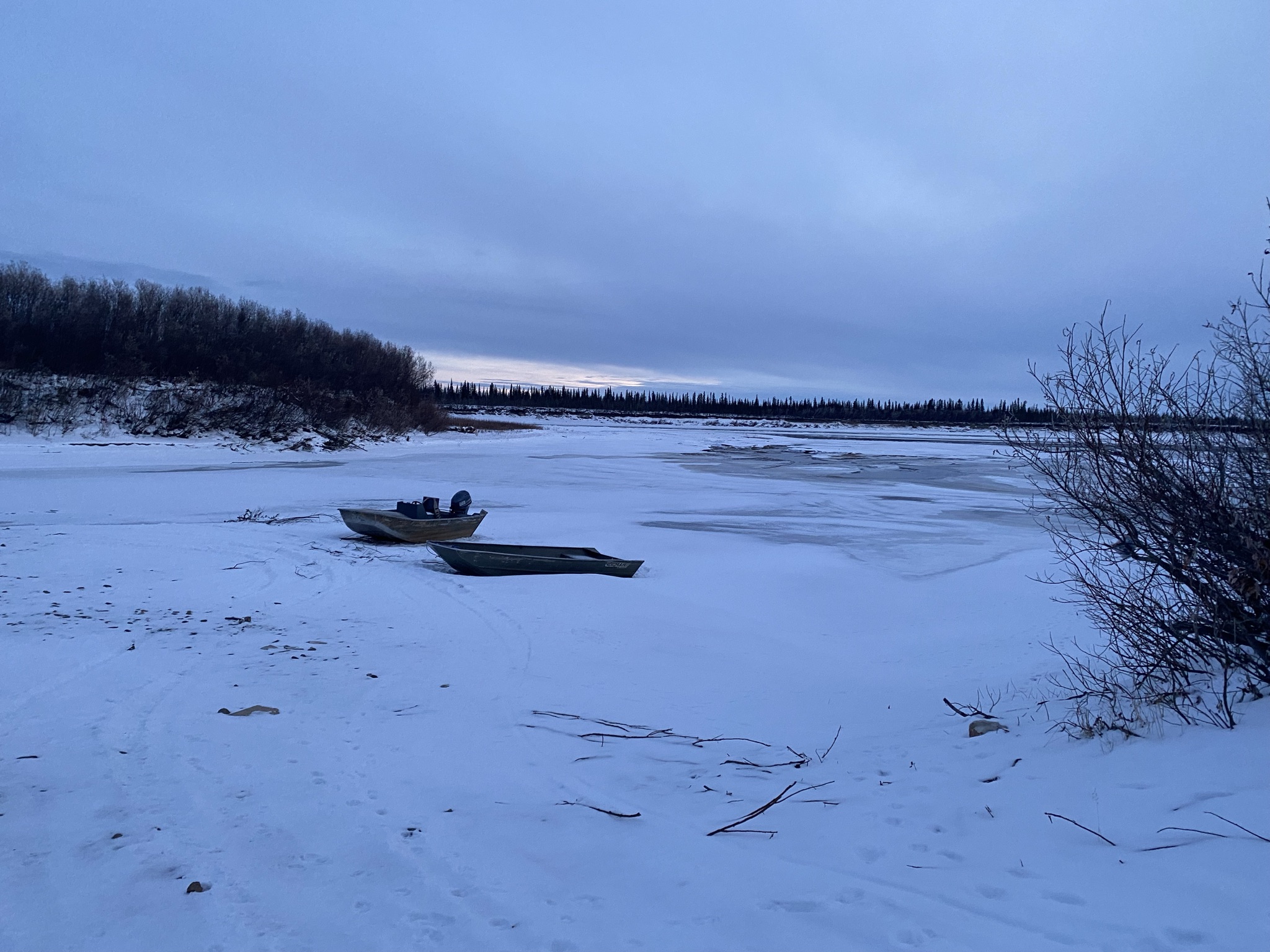On August 28, 2024, the Specific Claims Tribunal (Tribunal) released its decision in Waterhen Lake First Nation v His Majesty the King in Right of Canada. In this decision, Justice Ducharme considered the test for creating a reserve and the application of the honour of the Crown to enforce promises made by Crown agents. At issue in this case was the date at which Waterhen Lake First Nation’s (Waterhen) reserve was created following its adhesion to Treaty No. 6 and whether a separate timber reserve had been promised to Waterhen at the time they adhered to the Treaty. Unlike most specific claims brought before the Tribunal, this claim was not bifurcated. Both the validity and the compensation decision were issued together.

Photo credit: Krista Robertson
Facts
Waterhen is located in Treaty No. 6 territory, about 350 km north of Saskatoon, Saskatchewan. Cree people have lived at Waterhen Lake for generations. Treaty No. 6 was negotiated in 1876 and stipulated that reserves would be set aside according to the land entitlement formula of “one square mile for each family of five, or in that proportion for larger or smaller families.” Waterhen entered into talks with Inspector of Indian Agencies W.B. Crombie over adhering to the Treaty in 1917 and made it clear to him that they required hay lands and timber lands in addition to a main reserve at Waterhen Lake. Crombie marked all lands Waterhen identified on a map and suggested in his official report to the Department of Indian Affairs (DIA) that they be reserved for Waterhen.
Waterhen’s membership was divided over whether to accept the Treaty and many members refused to adhere to the Treaty due to concerns about being confined to a reserve. Indian Agent Taylor visited Waterhen Lake in 1921 to take the First Nation’s adhesion to Treaty No. 6 and, according to Waterhen oral history, promised that a surveyor would return to set aside a timber reserve. This did not occur.
Canada accepted Waterhen’s adhesion by way of an Order-in-Council on December 1, 1921. The Order-in-Council neither mentioned the reserve boundaries nor made a confirmation of a reserve . Canada delayed setting aside a reserve for Waterhen for several years hoping that members who had not initially accepted the Treaty would reconsider.
In 1925, Canada took steps towards confirming a reserve of 29,187.40 acres for Waterhen but, on the advice of a senior DIA official, stopped short of executing the Order-in-Council. In 1926, Canada sent a surveyor to Waterhen. The surveyor met with Waterhen and selected a reserve of 19,698.60 acres based on the Band’s population of 93 “Treaty Indians” and an anticipated further 51 adherents, for a total of 144 people. The Tribunal found that this equated to a greater acreage per person than contemplated by the land entitlement formula. On May 2, 1930, Canada executed an Order-in-Council confirming a reserve of 19,772.80 acres to the Waterhen Lake First Nation. The timber lands identified by Waterhen in the talks leading up to adhesion were not included in the reserve.

Photo credit: Krista Robertson
Tribunal Decision
Before the Tribunal, Waterhen alleged that a reserve of 29,187.40 acres, more or less, was created upon Waterhen’s adhesion to the Treaty in 1921. Waterhen argued that Canada’s 1930 Order-in-Council, which confirmed a reserve of 19,772.80 acres, constituted an illegal disposition of reserve lands under the Indian Act, breached Canada’s fiduciary obligations, and breached the honour of the Crown. Waterhen further alleged that Indian Agent Taylor promised Waterhen a timber reserve in 1921. By making this promise and failing to deliver, Waterhen argued that Canada breached its legal obligations to Waterhen under the Treaty, the fiduciary duty, and the honour of the Crown.
The Tribunal found that Canada intended to set apart Waterhen’s main reserve using the land entitlement formula stipulated under Treaty No. 6, and that in 1921 Canada’s agent had not intended to complete the reserve creation process. The Tribunal therefore held that the reserve was created in 1930, and the reduction in the reserve’s acreage between 1921 and 1930 did not constitute an illegal taking. However, the Tribunal found that Canada had breached its fiduciary obligations to Waterhen during the reserve creation process.
With respect to the timber reserve, the Tribunal found that Indian Agent Taylor had in 1921 promised Waterhen a timber reserve, that he had the authority to bind the Crown, and the Crown never delivered on the promised timber reserve. The Tribunal held that the unfulfilled promise breached Canada’s duty to act diligently in pursuit of keeping the promises that it makes and to further the “honourable reconciliation of Crown and Aboriginal interests.”
The Tribunal then turned to the question of compensation. Most of the compensation evidence presented during the hearing dealt with an illegal taking of lands from the main reserve in 1930, but the Tribunal found this had not occurred. Instead, the Tribunal had held that the Crown breached its fiduciary obligations to Waterhen during the process of creating the main reserve. The Tribunal noted that no evidence had been placed before it regarding how it should approach compensation for a fiduciary breach in the absence of an illegal taking, but suggested that such evidence could have helped it award compensation for this breach given that equitable compensation is concerned both with compensating the plaintiff and “enforce[ing] the trust which is at [equity’s] heart.” In the end, the Tribunal awarded no compensation for this fiduciary breach.
The Tribunal then turned to compensation for the timber reserve. The Tribunal held that Waterhen had lost the entire timber reserve of about 7,680 acres due to the Crown’s failure to take steps to diligently fulfill its promise. Applying Restoule, the Tribunal held that compensation must be determined beginning at the time the promise was made in 1921.
The Tribunal found the claim for the timber reserve valid under paragraph 14(1)(c) of the Specific Claims Tribunal Act. That paragraph does not automatically entitle a claimant to the types of compensation awarded for an illegal taking, namely the current unimproved market value (CUMV) of the lands and the loss of use (LOU) of the lands. In this case, the Tribunal found that the most appropriate remedy would be a constructive trust over the timber reserve, but that the Specific Claims Tribunal Act prevented it from making that award. Instead, the Tribunal held that Waterhen was entitled to CUMV and LOU of the land. But for the Crown’s broken promise, the Tribunal reasoned, the Crown would have set apart the timber reserve for Waterhen. What Waterhen had lost was the opportunity to own the lands and to put them to their most advantageous use from 1921 onwards. The Tribunal accepted Waterhen’s expert evidence that they could have used the timber reserve for both agriculture and timber harvesting.
The Tribunal considered the expert evidence put forward by Waterhen and the Crown, applied the principles of equitable compensation set out in Southwind, declined to discount the award to account for realistic contingencies on the basis that these had already been adequately addressed through the expert reports on CUMV and LOU, and considered whether the ultimate award would be “sufficient to fulfill the deterrent function of equity.” The Tribunal determined that awarding compound interest would adequately fulfill the function of deterrence.
The appraisers for the Crown (Bradley Slomp) and Waterhen (Alana Kelbert) came to similar conclusions on both CUMV and LOU. Both experts’ LOU analyses used an owner-operator model. The Tribunal accepted both reports and used the average of the two opinions on both issues.
On the issue of lost timber revenue, expert witness Greg Scheifele for Waterhen examined aerial photographs, forestry composition surveys, the local timber industry, transportation methods of timber, inflation rates and input from Waterhen Elders to assist in informing an accurate assessment of revenue that could have been generated from harvesting timber from the timber reserve. In assessing the timber reserve revenue, Scheifele concluded that it would not have been feasible for Waterhen to harvest timber as early as 1921 due to conditions of the forestry canopy, type of composition that was found in the area and what was being harvested during that period. Rather, Scheifele estimated that harvesting would have likely occurred in 1944/45 due to increased production in the area, changes in transportation and what was being commonly harvested. Scheifele utilized several economic models and harvesting periods that produced different estimates of revenue that Waterhen could have benefitted from. From each harvesting period the total forgone revenue to Waterhen from timber harvesting in the promised timber reserve was to be $1,564,003. The Tribunal increased this figure by 4% to account for the lost opportunity of Waterhen to be the owner-operator of the timber operation on the lands. The Crown did not adduce evidence on lost forestry revenue.
The Tribunal assessed Waterhen’s losses with respect to the timber reserve as follows:
- CUMV: $2,568,000;
- LOU from agriculture: $831,000 in nominal dollars, brought forward to present value at Band Trust Account rates compounded annually at 100%; and
- LOU from forestry: $1,626,563.27 in nominal dollars brought forward to present value at Band Trust Account rates compounded annually at 100%.
Comments
The Tribunal’s comments in the compensation portion of this decision highlight the strategic value in bifurcating specific claims into validity and compensation phases. It is sometimes argued that it would be more efficient to hear both phases together, as was done in this case. But as the decision in Waterhen shows, it is very difficult to predict the grounds upon which the Tribunal may find a claim to be valid. A non-bifurcated approach places claimant First Nations in the position of having to guess what kind of evidence to lead, and instruct experts on how to prepare their reports without the benefit of the Tribunal’s decision on validity.
Waterhen has requested that the Federal Court of Appeal review this decision.
This case summary provides our general comments on the case discussed and should not be relied on as legal advice. If you have any questions about this case or any similar issue, please contact any of our lawyers.
See CanLII for the Reasons for Judgement.